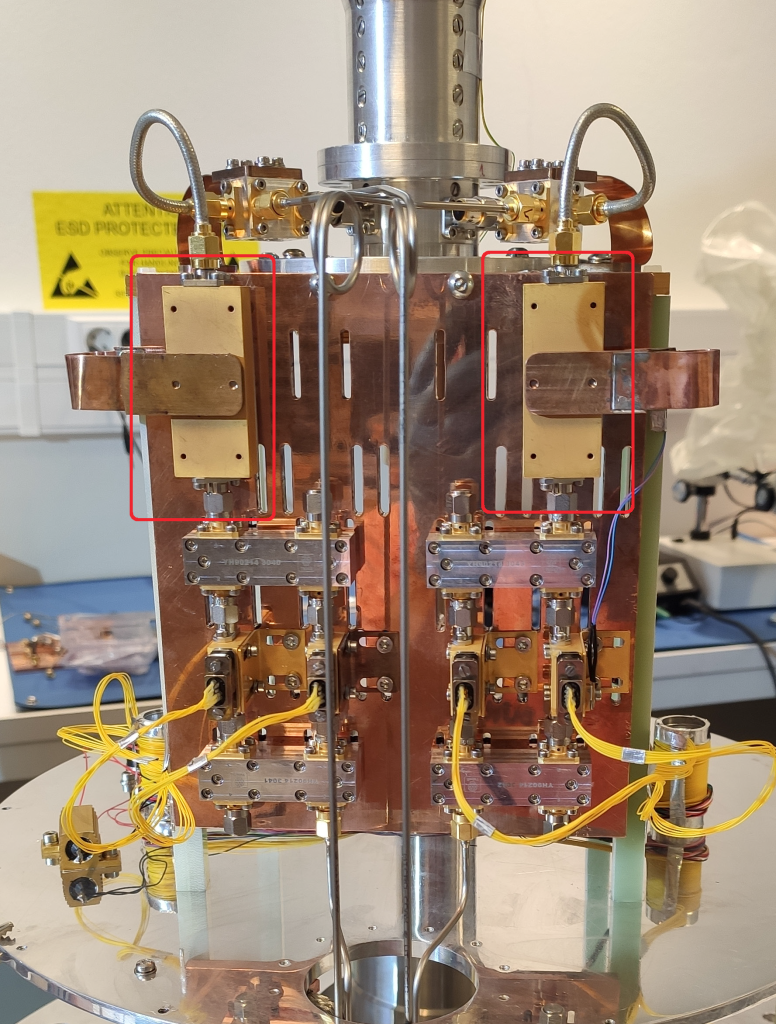RAEGE Santa Maria accepted in the VGOS Network
The VGOS Core Network (VLBI Global Observing System) comprises all the stations equipped with state-of-the-art technology to cope with the requirements defined by GGOS (Global Geodetic Observing System) to achieve the accuracy and precision desired for the geodetic VLBI products, as the EOPs (Earth Orientation Parameters) or the contribution for the ITRF (International Terrestrial Reference Frame).
In October 2022, a VGOS ultra-broadband receiver (2-14 GHz) was installed in Santa Maria radio telescope that has new 30 dB cryogenic directional couplers for PhaseCal and NoiseCal signal injection in front of the LNAs, which are of new design and are configured in balanced mode in order to improve their input matching. It is equipped with a new 10 MHz-spaced tone generator and a new CDMS, both of them with improved thermal stability. This receiver was designed and constructed in the Yebes Observatory.
Following months of an exceptional work conducted by the staff of Yebes Observatory developing a HTS superconducting filter to mitigate the powerful radar signal interference, this filter was installed in the end of September 2023 with the assistance of RAEGE Santa Maria staff, and with impressive results, making band A data useful once again.
Resulting from the successful results from the RAEGE Station of Santa Maria in the VGOS-OPS session VO3327 on October 5, we would like to announce that the International VLBI Service for Geodesy & Astrometry (IVS) has confirmed on November 8 that the performance and results of Santa Maria Station have coped with all the requirements, and they have decided to include Santa Maria in the VGOS Core Network as a regular station. This means that Santa Maria station is now scheduled to participate in all the remaining VGOS 24h sessions until the end of the year and will be added to the VGOS Master Schedule of 24h sessions for 2024.
Well done RAEGE!

